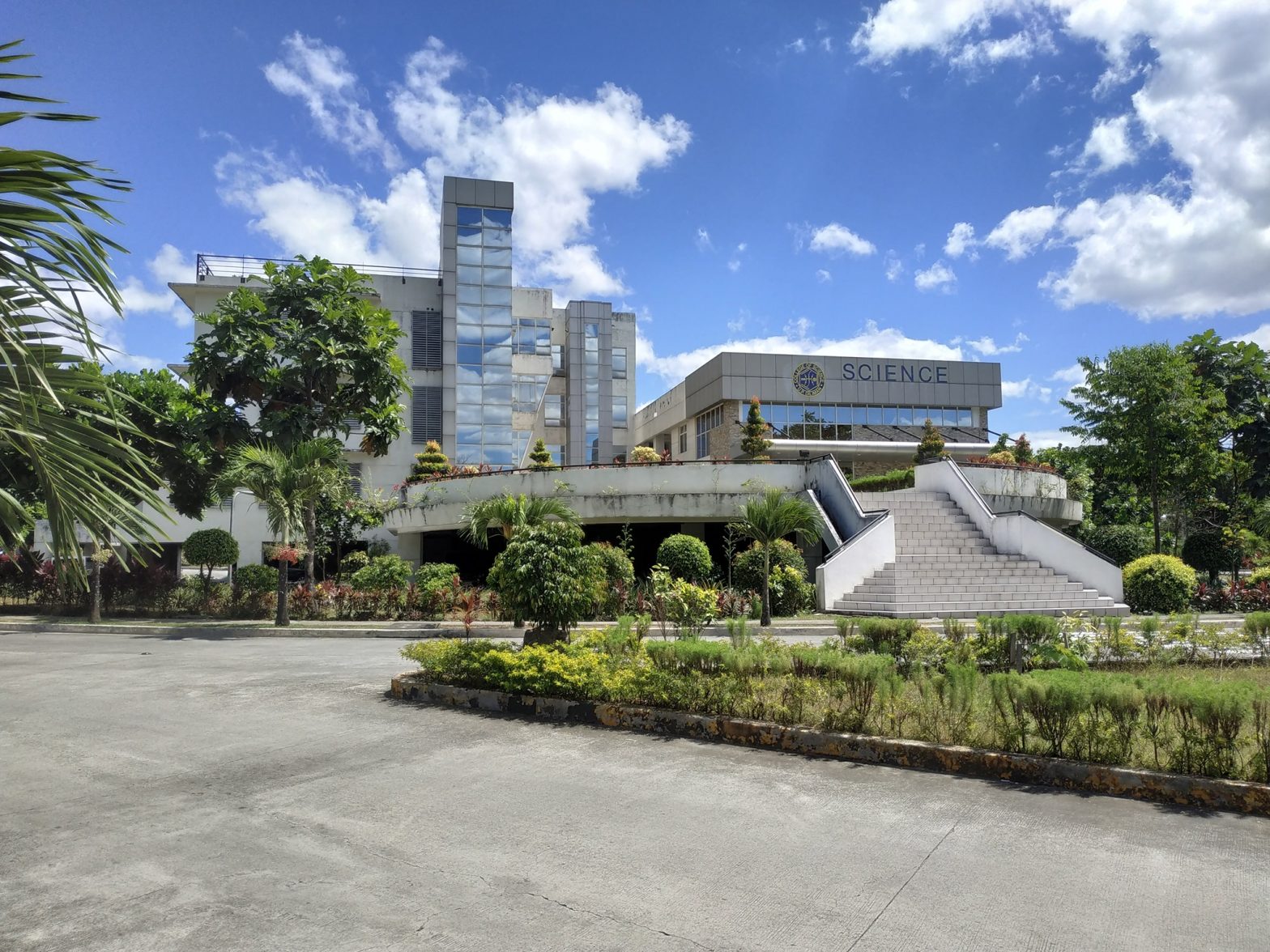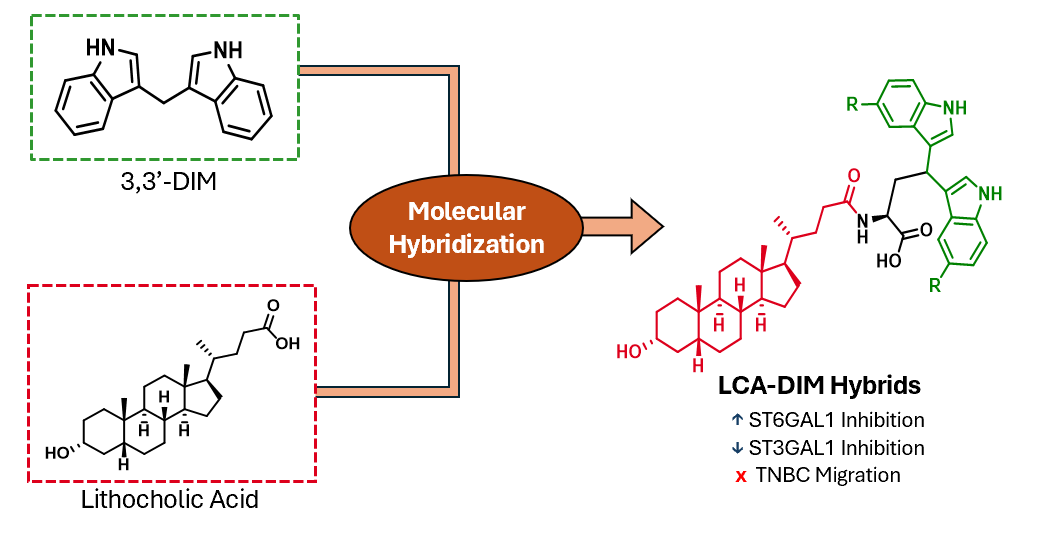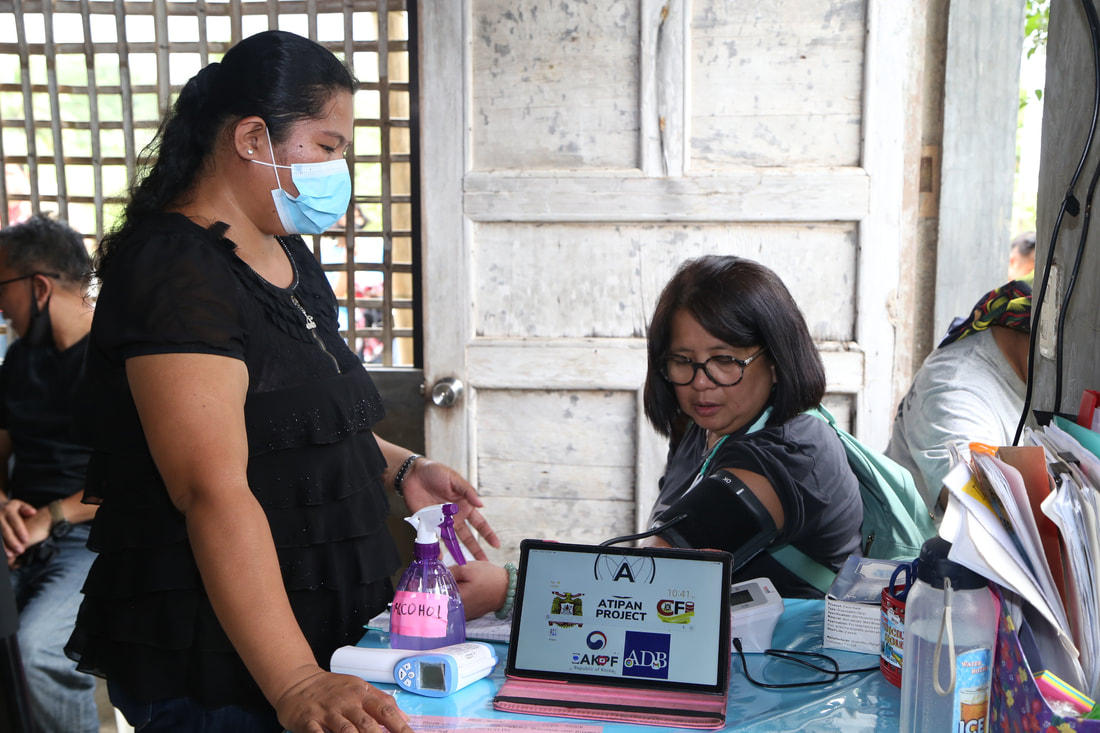Mga mananaliksik nakatuklas ng mga bagong jellyfish species sa mga dagat ng Pilipinas
Published: December 22, 2025
By: Eunice Jean C. Patron
Translated by: Dr. Ian Kendrich Fontanilla
Ang Pilipinas, na matatagpuan sa loob ng Coral Triangle, ay kinikilala bilang isa sa pinakamayamang marine ecosystem sa mundo. Gayunpaman, maraming mga marine species—gaya ng carybdeid box jellyfish na isang uri ng dikya—ay nananatiling hindi naidokumento. Ang taglay nilang potent venom at ecological significance ay nagbibigay-diin sa kahalagahan ng pagsasagawa ng tamang pag-aaral sa taxonomy ng mga box jellyfish.
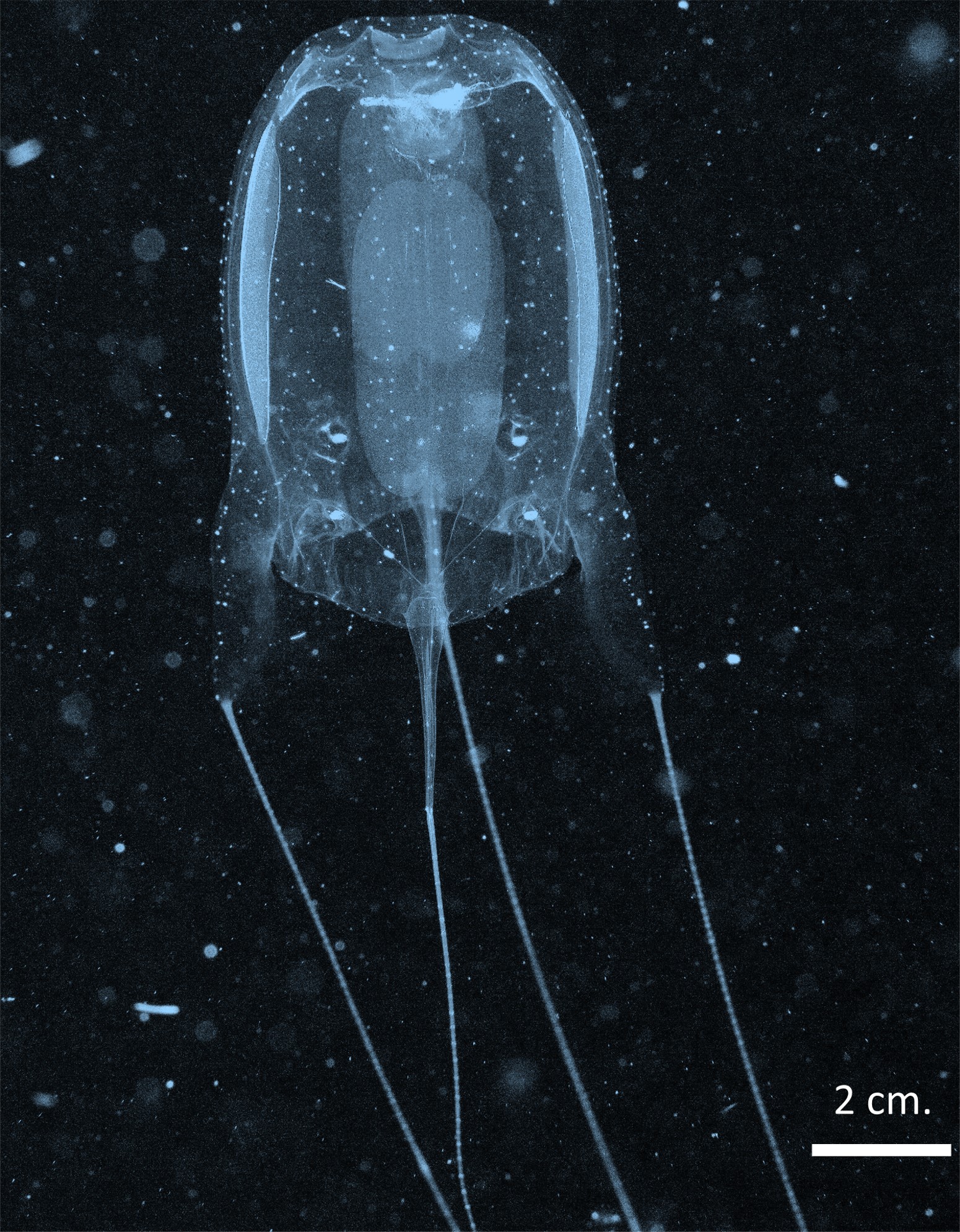
Naidokumento ng mga marine researcher ang ilang bagong naitalang box jellyfish species sa Pilipinas, na nagdudulot ng mahalagang kontribusyon sa lumalaking database ng marine biodiversity ng bansa. Ang grupo ng mga mananaliksik ay binubuo nina Dr. Sheldon Rey Boco at Christine Gloria Grace Capidos ng The Philippine Jellyfish Stings Project; Russel Christine Corcino at Dr. Lemnuel Aragones ng Unibersidad ng Pilipinas – Diliman College of Science’s Institute of Environmental Science and Meteorology (UPD-CS IESM); Dr. Phuping Sucharitakul ng Batavia Coast Maritime Institute sa Western Australia; Ram Yoro ng RY Photography; Dennis Corpuz ng Anilao Critters Studio; at Scott Tuason ng Squires Sports Philippines.
“Bakit pa ba sila dapat pag-aralan? May tatlong dahilan,” sabi ni Dr. Boco. “Una, bahagi sila ng marine food chain, at ang kanilang presensya o kawalan ay maaaring magpahiwatig ng tunay na kalagayan ng mga marine ecosystem. Pangalawa, kumakain sila ng mas maliliit na nilalang at pagkain naman sila ng mga mas malalaking nilalang, na tumutulong na pagpapanatili ng kaayusan sa lahat. At ikatlo, maraming carybdeid ang may potent venom na maaaring magpadala sa ospital ang sinumang matamaan. Ang pagtuklas kung paano gumagana ang venom ay maaaring makatulong sa paglapat ng sapat na gamot at makaligtas ng buhay balang araw.”
Pinagsama ng grupo ang in situ (on-site) na mga obserbasyon, gamit ang high-resolution na underwater photography at videography, kasama ng citizen science initiatives na na-verify sa pamamagitan ng digital authentication. Lalong pinaigting ng mga kontribusyon mula sa mga citizen scientist ang dokumentasyon ng grupo sa mga bagong naitalang box jellyfish species.
Kabilang sa mga kapansin-pansing natuklasan ay ang mga unang tala sa Pilipinas ng Alatina alata, Carybdea cuboides, Malo sp., at Morbakka virulenta. Kinumpirma rin ng mga mananaliksik ang mga bagong rekord para sa Copula sivickisi at Malo filipina. Ang mga bagong tuklas na ito ay nagpapahusay sa ating pag-unawa sa kung saan matatagpuan ang carybdeid box jellyfish—marami sa mga ito ay maaaring maging sanhi ng Irukandji syndrome—at kung gaano kalawak ang kanilang distribution.
“Lubhang napakahirap ng pag-aaral ng mga carybdeid sa kanilang natural habitat, higit sa lahat dahil ang mga dikyang ito ay nakatira sa mga lugar na mahirap maabot. Karamihan sa mga species, tulad ng Philippine carybdeid Copula sivickisi, ay naninirahan malayo sa pampang nang hindi bababa sa 100 metro mula sa baybayin at sa lalim na 20 hanggang 30 metro,“ paliwanag ni Dr. Boco. Nakatuon ang grupo sa pagmamasid sa adult medusa stage—ang nakikitang anyo ng mga dikya.
Upang obserbahan at idokumento ang medusae sa pamamagitan ng in situ na mga obserbasyon gamit ang mga larawan at video na may mataas na resolution, nagsagawa ang mga marine researcher ng ilang blackwater dives sa open water mula 2017 hanggang 2021 at noong 2024. Nangangailangan ang night diving ng espesyal na scuba certification at maingat na paghahanda para sa bawat biyahe. Bago ang bawat pagsisid, nagplano sa logistics ang grupo, nagsuri ng panahon at mga agos ng tubig, nagkalkula ng supply ng hangin, at nagsuri ng mga safety protocol upang matiyak ang kaligtasan ng lahat ng sangkot.
“Nangalap din kami ng mga larawan at video mula sa mga recreational diver sa pamamagitan ng citizen science. Ang diskarte na ito ay nagdulot ng isang panibagong hamon: ang pagpapatunay na tunay ang mga imahe. Dahil sa artificial intelligence na ngayon ay may kakayahang lumikha ng mga mukhang totoo pero pekeng larawan ng dikya, itinuring namin ang bawat submission bilang ebidensya sa isang imbestigasyion,” dagdag ni Dr. Boco. Sinuri ng team ang metadata, pag-iilaw, kundisyon ng tubig, at mga anatomical detail sa mga larawan at video upang kumpirmahin ang pagiging tunay ng mga larawan. Binanggit ni Dr. Boco na ang pag-uuri ng mga totoong rekord mula sa mga potential forgery ay nangangailangan ng pasensya at oras, ngunit ang accuracy ay mahalaga para sa paggawa ng reliable research findings.
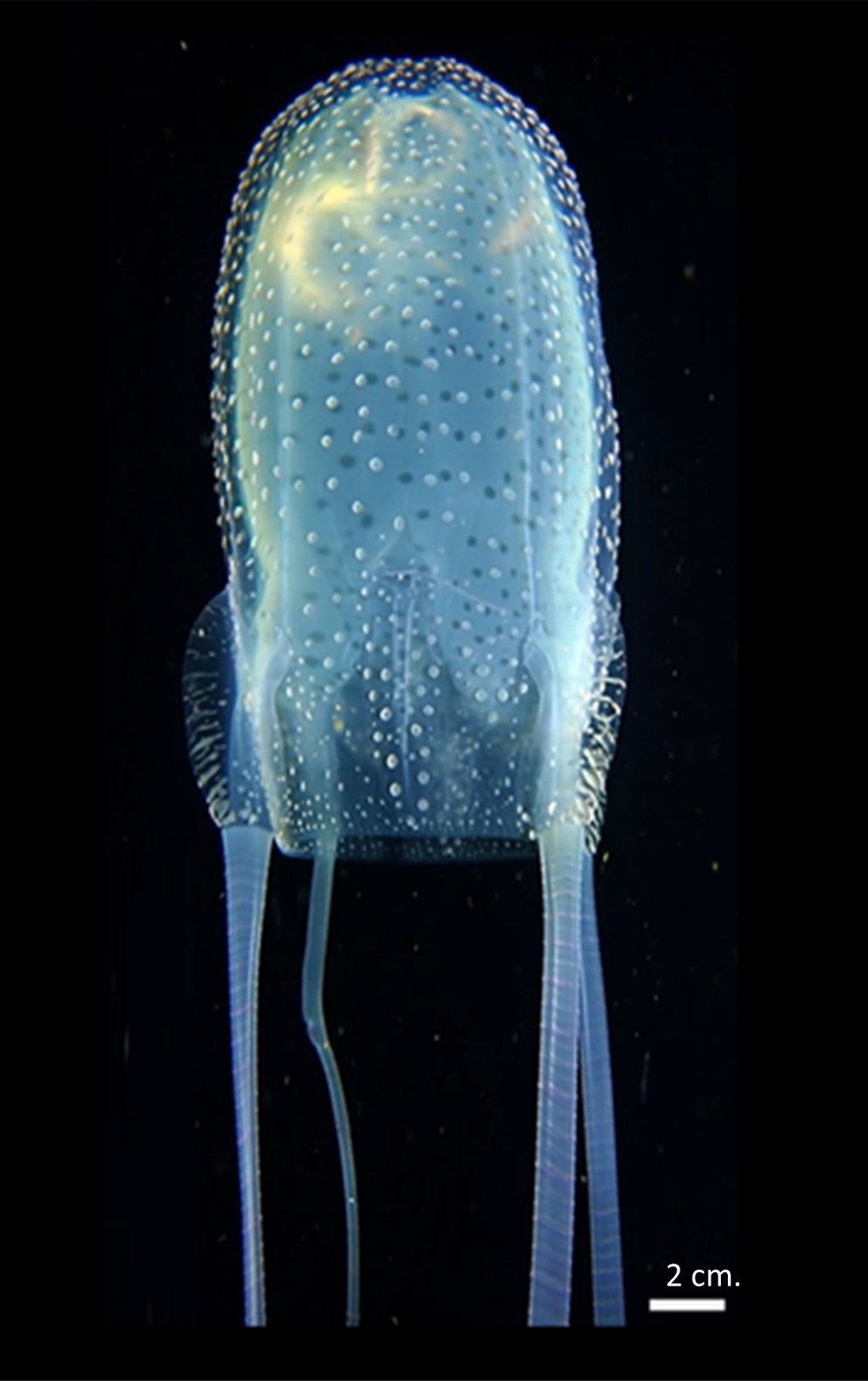


Plano ni Dr. Boco at ng kanyang grupo na gawing mas madali at mas mabilis ang citizen science. “Ang aming layunin ay upang mangalap ng high-quality jellyfish sightings na di masyadong nangangailangan ng maraming impormasyon, upang tumagal lang ng ilang segundo ang pag-uulat ng mga tao at di na kailangang sumagot ng pagkahaba-habang forms. Sa ganitong paraan, mas maraming kalahok ang maaaring mag-ambag nang mabilis, at makakakuha pa rin kami ng mga pangunahing data na kailangan para sa mas maayos na pananaliksik. Nais din naming mapabuti ang aming mga blackwater dives sa gabi,” sabi ni Dr. Boco. Higit pa sa mga obserbasyon, nilalayon ng mga marine researcher na magsagawa ng higit pang mga in situ na eksperimento sa panahon ng mga dive na ito upang mas marami pa ang malaman tungkol sa pag-uugali ng dikya, sa kanilang paggalaw, at mga kondisyon sa kapaligiran sa real time.
Inaasahan ng kanilang grupo na mahulaan kung saan maaaring lumitaw ang mga dikya ngayon at sa hinaharap, hindi lamang sa Pilipinas kundi pati na rin sa mga kalapit na karagatan.
Ang kanilang papel, na pinamagatang “New and first records of carybdeids including Irukandji box jellyfish (Cnidaria: Cubozoa; Carybdeida) in the Coral Triangle (the Philippines),” ay inilathala sa Thalassas: An International Journal of Marine Sciences, na sumasaklaw sa malawak na hanay ng mga locale, mula sa malalim na dagat hanggang sa mga kapaligiran sa baybayin at kasama rin ang marine at coastal biology, physics, at biology lalo na yaong may multidisciplinary work. Ang kanilang pag-aaral ay naambagan ng mga kontribusyon mula sa citizen science.
References:
Boco, S. R., Corcino, R. C., Capidos, C. G., Sucharitakul, P., Yoro, R., Corpuz, D., Tuason, S., & Aragones, L. V. (2025). New and first records of Carybdeids including Irukandji box jellyfish (Cnidaria: Cubozoa; Carybdeida) in the coral triangle (the Philippines). Thalassas: An International Journal of Marine Sciences, 41(4). https://doi.org/10.1007/s41208-025-00970-9
For interview requests and other concerns, please contact media@science.upd.edu.ph.

